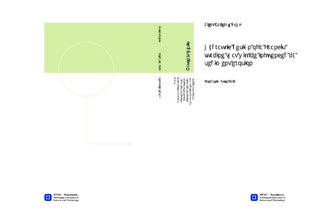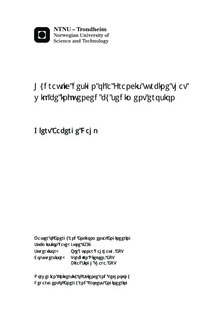| dc.contributor.advisor | Dahlhaug, Ole Gunnar | nb_NO |
| dc.contributor.advisor | Nielsen, Torbjørn | nb_NO |
| dc.contributor.advisor | Singh Thapa, Biraj | nb_NO |
| dc.contributor.author | Dahl, Gjert Aaberge | nb_NO |
| dc.date.accessioned | 2014-12-19T13:55:10Z | |
| dc.date.available | 2014-12-19T13:55:10Z | |
| dc.date.created | 2014-08-28 | nb_NO |
| dc.date.issued | 2014 | nb_NO |
| dc.identifier | 741702 | nb_NO |
| dc.identifier | ntnudaim:11397 | nb_NO |
| dc.identifier.uri | http://hdl.handle.net/11250/257803 | |
| dc.description.abstract | High amount of sediments in the Himalayas are at present a large problem for power companies in Nepal, preventing them of utilizing the large amount of hydro power available in the area. In the Jhimruk power plant the sediment load makes it necessary to repair the system once a year, and the power plant is shut down if the concentration of sediments is exceeding 3000 ppm. Several different measures have been tried to minimize the wear on the system.This Master thesis describes the theoretical definition of erosion and examines both designs and materials affecting erosion. The work is based on earlier work and strive for better design of Jhimruk power plant. The main objective of the thesis is to define different guide vane designs that affect and reduce sediment erosion in a Francis turbine. The work is carried out using several NACA designs for the guide vanes and implementing sediments in the flow to simulate sediment erosion. The assignment include utilization of several programs, including the Matlab-based design tool Khoj, the meshing tools Ansys Turbogrid and Ansys ICEM, and the CFD calculation tool Ansys CFX.The simulations in Ansys CFX are done using the Tabakoff erosion model. The erosion on the reference parts show similar tendencies as previous work, while the new designs in general show heighten erosion tendency. The simulations show in general the same tendency for the reference runner and the optimal runner.The results produced in this thesis show the difference in sediment erosion handling by different guide vane profiles, affecting the pressure distribution along the guide vanes and thus disrupting the inlet conditions on the runner. In this thesis the implementation of NACA 2412 enhancing the pressure difference across the guide vane shows the best effect of erosion reduction, while the design changes equalizing this pressure difference generally show an increased erosion tendency along the runner. The results are thus opposite of the expected results.The implementation of the optimal runner design show that the use of NACA 4412 with pressure difference enhancing effect reduces the erosion maximum for the design changes. | nb_NO |
| dc.language | eng | nb_NO |
| dc.publisher | Institutt for energi- og prosessteknikk | nb_NO |
| dc.title | Hydraulic design of a Francis turbine that will be influenced by sediment erosion | nb_NO |
| dc.type | Master thesis | nb_NO |
| dc.source.pagenumber | 147 | nb_NO |
| dc.contributor.department | Norges teknisk-naturvitenskapelige universitet, Fakultet for informasjonsteknologi, matematikk og elektroteknikk, Institutt for elkraftteknikk | nb_NO |

